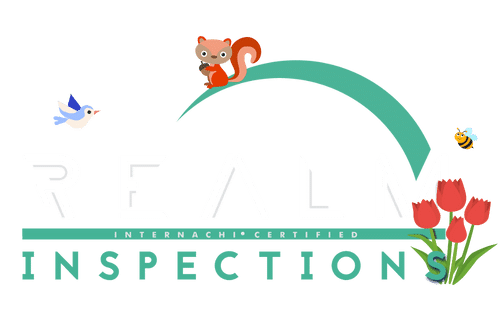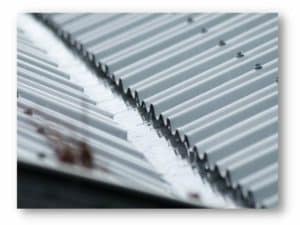Dead Valleys on your Roof
“Dead valleys”, sound ominous, don’t they?
Well, when it comes to your roof, dead valleys are kind of subjective. Let Realm Inspections explain from our perspective. One thing to keep in mind is that we don’t call out dead valleys as a deficiency in a home inspection report. Why? Simply stated, it is a design element that originates with the designer or architect. The inclusion of these elements is in part due to complex rooflines and layouts of the floorplans of the home.
What is a dead valley?
You keep using these words, so what the heck do they mean? Dead valleys are where multiple roof slopes converge. But what does that mean exactly? Well, as mentioned above, is a design element of the roof on a home. It is where two or more roof planes or roof planes and sidewalls converge in such a way that they concentrate water runoff to a small area. Think of them as a funnel. You will typically see them collecting debris on a roof surrounded by trees. You may also notice a deluge of water pouring off your roof at the base of one of these valleys during a storm
The Problem
-
- Debris Accumulation: The most obvious issue with a dead valley is the collection of debris. Trees shed their leaves, twigs, pollen husks, nuts, acorns, amongst other things. In a perfect world, the rain will wash the debris off the roof. However, this area will create a bottleneck that traps the debris. This trapped debris holds water against the covering, gradually deteriorating the shingles and shortening the roof’s useful life.
- Construction Challenges: Older homes may face construction challenges with dead valleys. Improper installation of roofing layers can result in water leakage. Modern advances have improved construction, but older homes may not benefit from these advancements. New construction inspections confirm these roof sections are properly built.
- Erosion: High volumes of water rushing down from dead valleys can cause erosion. This can lead to damage to landscaping, splash-back on less durable siding, and even affect windows and doors if not properly managed.
- Water at the Foundation: Excessive moisture near the foundation due to dead valleys can lead to foundation issues. Soil movement around the foundation can result in differential settlement and hydrostatic pressure, destabilizing the foundation.
What can I do?
Aside from being on the design team when the plans were drafted for your home, not much can be done about dead valleys. However, you can:
- Develop a maintenance routine to keep debris from building up.
- Ensure proper water drainage away from the foundation using gutters, downspouts, diverter heads, and other drainage systems.
- Aim to discharge water a minimum of 4-6 feet away from the foundation wall to prevent water damage.
When it comes to a dead valley on your roof, vigilance is key.
If you are in need a professional home inspector in Fuquay Varina or the surrounding Raleigh, NC market, contact Realm Inspections for the best in home inspection services! But I already own my home. Perfect! We are big advocates of proactive homeownership. Get in front of any potential hardships and have us perform a Home Maintenance Inspection on your home. Schedule today!



